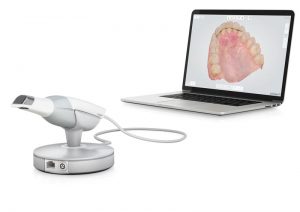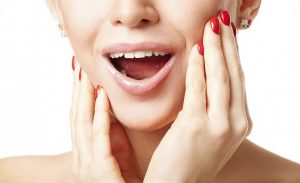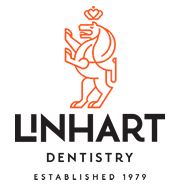
Sugar is the new Crack.
We’ve been told that SUGAR causes cavities and sugar replacements are “healthy”.
We were lied to.
Sugar DOES NOT cause cavities (directly), but it can lead to tooth decay.
ACID is what actually causes cavities. And bacteria in the oral cavity can produce these acids as a byproduct of sugar. In fact, in the absence of these sugar-loving bacteria, Strep Mutans and Lactobacillus species, decay is unlikely.
Unlikely, but not impossible. There are other sources of acid like stomach acid and foods that can, even without bacteria or sugar, cause cavities.
One thing we know for sure is that sugar consumption facilitates the growth of the very bacteria that can use it to produce acid and hence, cavities!
Sugar consumption iis a huge problem for human beings.
If you were told that, on average, Americans consume over 22 teaspoons of sugar a day, would you be surprised? Well it’s true.
Yes, that was published in a 2005 study. It’s even higher today, over 100 lbs of sugar per person per year in the US.
From 1970 to 2005, sugar in the American diet increased 19%, directly impacting the epidemics of obesity, diabetes and tooth decay. Between 1988 and 2012 the prevalence of Type 2 diabetes rose a whopping 25% in both obese and normal weight populations.

Sugar stimulates the pleasure receptors of the brain much like crack cocaine and heroin does.
In fact, a study by Ahmed, Guillem and Vandalee, published in 2013 showed that on a neurobiological level, sugar is actually more powerful (robust) than cocaine and is even more rewarding and attractive.
Cocaine addicted rats were willing to forgo their fix of cocaine in favor of Oreos! YUM. That’s just how addictive sugar is.
Diabetes and obesity are major contributors to the USA’s $3.2 Trillion expenditure on healthcare in 2015. That’s nearly $10,000 per person, per year and 18% of our GDP. Compare that to the next highest industrialized country, France, which is at 11% and the U.K. at 8.8%.
Hmmm, could our addiction to sugar be the cause?
YES.
Refined, processed carbohydrates are not only easier for us to process; they’re easier for the bacteria in your mouth to process too. Processed foods are built to stay on store’s shelves and ship. Unprocessed foods are more perishable but that’s the way nature intended us to eat. It’s the “paleo” way.
The bacteria in our mouth process the carbohydrates, produce acid and the result is decay. Plus, sugars and refined carbs actually change the makeup of the bacteria in the mouth, what is called the Microbiome.
It’s a combination of the Microbiome of your mouth, the acid coming into your mouth from either food or from your stomach (heartburn or reflux), the hardness of your teeth and the quantity and makeup of your saliva that factors into whether you’ll get decay.
There’s a possible solution to a dry mouth, a bad Microbiome and a sweet tooth. XYLITOL.
This natural, alcohol sugar changes the bacteria in the mouth, promoting safe bacteria and discouraging harmful ones from congregating. Plus, used in gum or sucking candies, Xylitol promotes saliva flow, which also helps reduce decay, remineralizing teeth and even fights gum disease. It also has a higher glycemic index than regular sugars.
Xylitol has been approved by the U.S.’s FDA, the World Health Organization and the European Union’s Scientific Committee for Food.
One caveat. Like chocolate, Xylitol is dangerous for dogs, so keep the stuff away from Fido.
Funny enough, Theobromine, which is included in Linamel Toothpaste, is an extract from chocolate.
So cut down on the sugars, not only are they bad for your overall health including causing obesity, diabetes, heart disease and other maladies, but sugar also leads to tooth decay, which means more frequent trips to your dentist!
Modern dental practice is so comfortable and pleasant that almost all patients can tolerate or even enjoy their time in the dental chair. Effective and gentle local anesthesia with or without the use of nitrous oxide (laughing gas) allows nearly everyone to experience dental work with minimal stress. A light oral sedative can be given to a patient prior to dental treatment and is an option that helps allay anxiety, and promotes a relaxed yet awake state of consciousness.
At Linhart Dentistry, we are able to perform the most simple cleanings, to complex procudures like Porcelain Veneers, Dental Implants, and Full Mouth Rehabilitation under all different forms of anesthesia.
Some patients can benefit from or even require deeper sedation during their dental procedures than nitrous oxide, lidocaine (novocaine), or numbing gel.
Patients with extreme anxiety about dentistry may not be able to tolerate being awake at all during any but the most minor dental procedures. These patients may have suffered traumatic dental experiences as children or may have had difficulty “getting numb,” or even may have an intense gag reflex. Dental anxiety has prevented many patients from getting dental care for years (even decades!), resulting in a cycle of untreated dental decay, increased sensitivity and dental pain, and increased fear. Once a patient’s dental health has been restored (which may require several sessions under sedation), the patient now has healthy teeth, pain is eliminated, and often the dental phobia has lessened as well, allowing the patient to follow up with routine dental care while awake.
Many individuals with Special Needs such as Autism may not be able to tolerate any dental work at all while they are awake. Children who require extensive dental restoration may also not be able to cooperate for longer procedures. Often these patients are referred to a hospital setting for care, but Sedation Dentistry in the office may be a safe, less stressful and more pleasant option for many of these special patients and their families. At times a premedication may be given to help these patients tolerate intravenous placement (an IV), and then a rapidly acting, rapidly eliminated sedative is given to allow the patient to undergo a variety of dental procedures, including x-rays, cleanings and restorations. For many patients, Sedation Dentistry allows for the completion of necessary dental care that otherwise would be impossible.
Sedation Dentistry has been safely administered to thousands of patients in an in-office setting. The highest standard of care is by a Board Certified Anesthesiologist with vast experience in Office-Based Anesthesia, and Anesthesia for Dentistry in particular. Safe sedation begins by having patients complete a pre-anesthesia questionnaire and an evaluation by their private medical doctor. The anesthesiologist will review this information and then speak with the patient well in advance of the procedure to formulate the optimal sedation plan. During Sedation Dentistry the anesthesiologist continuously monitors the patients’ vital signs and administers just the right amounts and combinations of medication to achieve safe and effective sedation. Patients sleep safely throughout their dental work and awaken with the good news that the procedure has been completed!
Dr. Nadine Keegan is a board certified Anesthesiologist and has worked for years with Linhart Dentistry to provide comfortable treatment to our patients.
Please contact us if you have interest in anesthesia and sedation for your next visit!
– Nadine J. Keegan MD


Also known as DIY, it has become a hot subject in the health field. After all, with healthcare costs rising, increased waiting times for Doctors and a generalized disgust with the entire system, the urge to just “do it yourself” can be enticing. However, DIY medicine comes with a slew of risks and dangers that you may want to avoid at all costs!
There are plenty of companies willing to take your money and help you out.
Do it yourself anti-depression treatment, hair regrowth, anti-snoring, arthritis remedies, headache relief, teeth whitening, and even teeth straightening systems are available.
Do it yourself therapies pander to our society’s urge for immediate gratification and cost savings. Why go to a Doctor when you can do a search on the internet and get the DIY product delivered to your door in a day, and for ½ the cost?
Yet, we know that immediate gratification can come at a cost that time not money can account for. Often, this cost is not realized until years down the road.
It’s estimated that up to 20% of people who use DIY products can actually be harmed by them. Part of that computation takes into consideration the fact that people who diagnose themselves incorrectly and use a DIY product, might be deferring effective treatments and could lead to significant worsening of the underlying disease.
And where’s the FDA and protection from the government?
Take the anti-snoring product, which rhymes with Zipper and is being heavily promoted by a Soprano’s sounding character all over the radio. While this product might, in fact, reduce or even eliminate snoring in some people, it can actually mask underlying, life-threatening problems such as Obstructive Sleep Apnea (OSA) or Central Sleep Apnea (CSA).
It’s estimated that 50% of people who snore have some significant underlying and perhaps even life threatening problem, such as Sleep Apnea. And yes, Sleep Apnea can lead to DEATH. And an at-home appliance may mask the symptoms associated with Sleep Apnea.
And what about the significant potential for TMJ problems and teeth shifting that are common with any improperly fitted and monitored DIY mouth device?
You see, snoring is a symptom. And, most DIY products are aimed at relieving a symptom, not the underlying issue.
What you should always ask, as we at Linhart Dentistry do, is: What’s causing the symptom? It sounds logical; find out what’s causing the symptom and treat the underlying cause first. Then, the symptom will disappear. Sounds like common sense!
But, as the great Benjamin Franklin said; “common sense is very UNcommon!”
Our healthcare system is guilty of treating symptoms rather than discovering and resolving causes. It’s the basis behind all the pop-up clinics and “Doc-in-the-box” Emergency clinics so ubiquitous today.
Linhart Dentistry is bucking this trend. We believe that uncovering causes, while perhaps taking more time and even costing a bit more up front, yields more predictable, sustainable and less costly care in the long run. We believe that health is a marathon, not a sprint.
So why aren’t others following Linhart Dentistry’s lead? The answer to most of these questions is; Follow The Money!
There’s more money in treatment than there is in thinking and diagnosing causes. Thinking and diagnosing takes time! It’s just a matter of economics.
But we’ve always believed in the philosophy of ‘putting your money where your mouth is’. We think our investment in technologies and taking the time to help diagnose underlying causes is well worth the effort…in the long run…FOR YOU.
So the next time you see an at-home treatment for snoring, teeth-straightening with invisible aligners, whitening, or arthritis, ask your qualified health care professional what the RIGHT treatment is for you!
Medical Perils of the Internet
There’s a new disease out there to be wary of. “Cyberchondria” is caught by surfing the web for medical information.
Would you accept medical advice from a stranger on the street? That’s what most of the Internet consists of; a bunch of strangers. The Internet can indeed be a tangled, impossible to navigate, web when searching for medical information.
You might think that you can search published medical (or dental) journals and get accurate information but that’s not necessarily the best strategy. Journals often publish obscure and challenging cases that probably won’t give you information about what you’re looking for. Even seasoned professionals often have a difficult time sifting through these articles to extract the relevant information.
A recent scientific article looked at the search habits of people before they showed up to the Emergency Room. What they found was that 80% of the people who looked things up online reported that their searches actually improved their subsequent ER experience. They felt that they were better able to communicate symptoms and understand what the Doctor was telling them. So, the conclusion was that looking things up can be helpful.
But “search” has challenges too. A search for “endometriosis”, the subject of over 4.5 million searches a year, showed that only ONE of the top 54 results contained accurate information. That’s scary. The best sources of information are from trusted sites such as Academic Institutions, Medical Centers or other professionally monitored sources whose information is vetted. Going to Pubmed or Google Scholar might not be as fruitful as going to The Mayo Clinic, Cleveland Clinic or Harvard Health.
And of course, one wouldn’t want to spend 20 minutes searching for the symptoms of a stroke, if that’s what’s happening, when you could have called 911 first!
In dentistry, the problem of search is just as perplexing. There’s a lot of bad and wrong information out there. That’s why we’ve begun sending out these email-newsletter-blogs. We want to be your trusted source of information.
We believe that the best medicine (and dentistry) is personalized. The Internet, at best, presents “One size fits all” solutions. At its worst, it presents “worst case” scenarios. Most problems are often in between. It’s “off the rack” advice. We prefer custom, individualized solutions and advice.
So here’s an invitation. If you have a symptom, problem or question, go ahead, do some Internet searching. Then, either call or email us. We’ll gladly answer your questions or give you advice based on what we know about you as an individual.
We’re here to help you at Linhart Dentistry. And, with our team of highly experienced specialists, we can give you the most accurate and best information possible. Whether its gums, teeth, tongue, TMJ, whitening, Invisalign, Sleep or snoring appliances, Cosmetics, Implants or any dental “search” you can think of, Linhart Dentistry has your answer. Just ask!
That’s the sound Rice Krispies are supposed to make when milk is poured over the popular breakfast cereal. It’s NOT what’s supposed to happen when your mouth opens or closes.

Creaky, crackling and noisy joints are symptoms that might be predictive of problems that could, if not dealt with, result in limitations of jaw movement such as lock-jaw. Imagine not being able to open your mouth wide enough to eat a sandwich? Or, what about not being able to chew without pain?
Some people haven’t been able to eat a Subway sandwich without pounding it down, all their lives. They just think such limitation is normal. If you can’t get at least 3 finger widths between your teeth, you might have a TMJ issue.
The jaw joint or TMJ, temporomandibular joint, is unique in the body. It’s a double joint, with one bone, the lower jaw suspended via a joint at either end. Movement of the lower jaw position is controlled by these joints and by the muscles, tendons and ligaments that attach to the head, jaws and neck.
Most often, joint sounds are innocuous. Many people don’t know they have any. Your dentist should include an examination of your TMJ’s as part of a comprehensive examination.
Sometimes, joint sounds are problematic. They can be indicative of a misalignment in the joint, arthritis or inflammation. In a car, such a misalignment will cause the tires to wear out unevenly. The same thing happens in the mouth, as teeth can also wear out.
How does a misalignment of the jaws happen?
The usual reasons are; wear and tear, clenching/grinding, muscle imbalances, sleep position, sleep disturbances, trauma, poor posture, stress, mineral deficiencies/overload and even medications.
Medications? Every drug has some unintended consequence. Some of the more common ones that can affect muscles are:
➢ Diuretics (like Lasix and hydrochlorthiazide),
➢ Procardia (for angina and hepertension)
➢ Proventil, Ventolin, Brethine (for asthma)
➢ Statins like Lipitor and Crestor(for cholesterol)
➢ Evista (used for osteoporosis)
➢ Antidepressants (Paxil, Zoloft, Prozac, Celexa, Lexapro and other SSRI’s which can also be used to treat ADHD)
Millions of Americans take one or more of these medications. Yet, most people and even most doctors don’t associate the symptoms of muscle issues with these medications. The most common muscle complaints involve painful leg cramps, which might never be associated with medication use. But, such cramps and spasms can happen in any muscle.
Another common symptom of “TMJ” is fullness or even ringing in the ear (called tinnitus). These too can be signs of muscle issues. And to prove it to yourself, clench your teeth together tightly. When you do, does the background noise change a little? That’s because the muscles that close the jaw also have an affect on the ear.
Treatment of “TMJ” involves first making the proper diagnosis. Then appropriate recommendations for treatment can be made, which might include, self-care, medication modification, bite guards, physical therapy, orthodontics, bite adjustments and sleep appliances.
The takeaways here are:
- Pay attention to joint sounds or changes
- Bring such changes to your dentist or hygienist’s attention
- Tell your dentist and hygienist about all the medications you take
Your TMJ’s are too important to take for granted.
Article by:
Dr. Michael Goldberg and the Linhart Dentistry Team
It is well known that fluoride, an element found in most water sources, has numerous dental benefits. It is essential to proper oral care. Fluoride can strengthen teeth and prevent tooth decay by keeping the acid produced by the bacteria in plaque from dissolving the enamel of our teeth. It cannot restore teeth with cavities, but it can prevent cavities, and it also reverses the early stages of tooth decay by allowing tooth enamel to repair, or remineralize, itself. Fluoridated water, toothpaste, mouthwash, and supplement pills are all sources of fluoride.
Proper fluoride intake is an important part of a well-rounded dental health regimen. Infants and young children don’t require as much, however, when carefully monitored, a child’s intake of fluoride is still a beneficial and necessary part of their oral care.
Fluoride Intake for Infants
Infants require the least amount of fluoride of any age group. Fluoride supplements, which are usually prescribed when children live in an area without fluoridated water, are not necessary for infants. For children under six months of age, the water used to prepare a baby’s formula provides sufficient fluoride. Baby formula generally contains fluoride already, with milk-based formulas containing less fluoride than soy-based formulas. Because of this, parents have the option of supplementing the level of fluoride contained in baby formula by preparing their child’s formula with tap water or fluoridated bottled water. If they want to limit their child’s fluoride intake, they can use non-fluoridated bottled water.
Some parents also choose to breastfeed as a way to limit fluoride intake. It should be noted, however, that breast milk contains only very small trace amounts of fluoride, and a breast milk fed baby receives virtually no fluoride exposure. Parents are advised to consult with a dentist to determine how to ensure their infants receive the right amount of fluoride.
When baby teeth begin appearing, parents can brush their child’s teeth with an infant toothbrush using water and a tiny smear of toothpaste. Children’s teeth should be brushed this way until around age two.
Fluoride Intake for Young Children
After the age of two, children begin brushing their own teeth, thus regularly ingesting fluoride in their toothpaste . Past this age, most of their fluoride intake comes from water, so children should only use a small amount of toothpaste when they brush. A pea-sized amount is more than sufficient, and children should always use a toothpaste that carries the ADA’s seal of approval.
Under the age of six, children should not use mouth wash that contains fluoride. Younger children have a tendency to swallow too much toothpaste while brushing, and if they use mouthwash, there is a high likelihood of them swallowing that as well. Parents should supervise young children when they are brushing their teeth to ensure they are not swallowing their toothpaste. It is around this age when, if a child lives in an area without a fluoridated water supply, a dentist might prescribe fluoride supplements to build their fluoride intake beyond toothpaste.
—
Fluoride is a pivotal part of maintaining proper dental health. While fluoride intake needs to be carefully monitored in infants and young children to avoid overexposure, parents should not be deterred from recognizing the benefits. Speaking with a dentist or a pediatric dentist is an excellent way to learn more about caring for children’s teeth, and obtaining more information about fluoride needs.
We would like to congratulate Lisa Ehrgott for being the winner of our Facebook 100th Like contest! She was randomly selected from the first 100 people who Liked the Dr. Linhart Facebook page, and is the winner of an electric Sonicare toothbrush.
Congratulations to Lisa and a big thank you to everyone else who has Liked and interacted with our Facebook page. We are hoping to use this outlet as a way to better communicate with our patients and make their dental experiences more enjoyable.
Please feel free to visit our Facebook page or Twitter profile for office updates, promotions, or to give your feedback.
